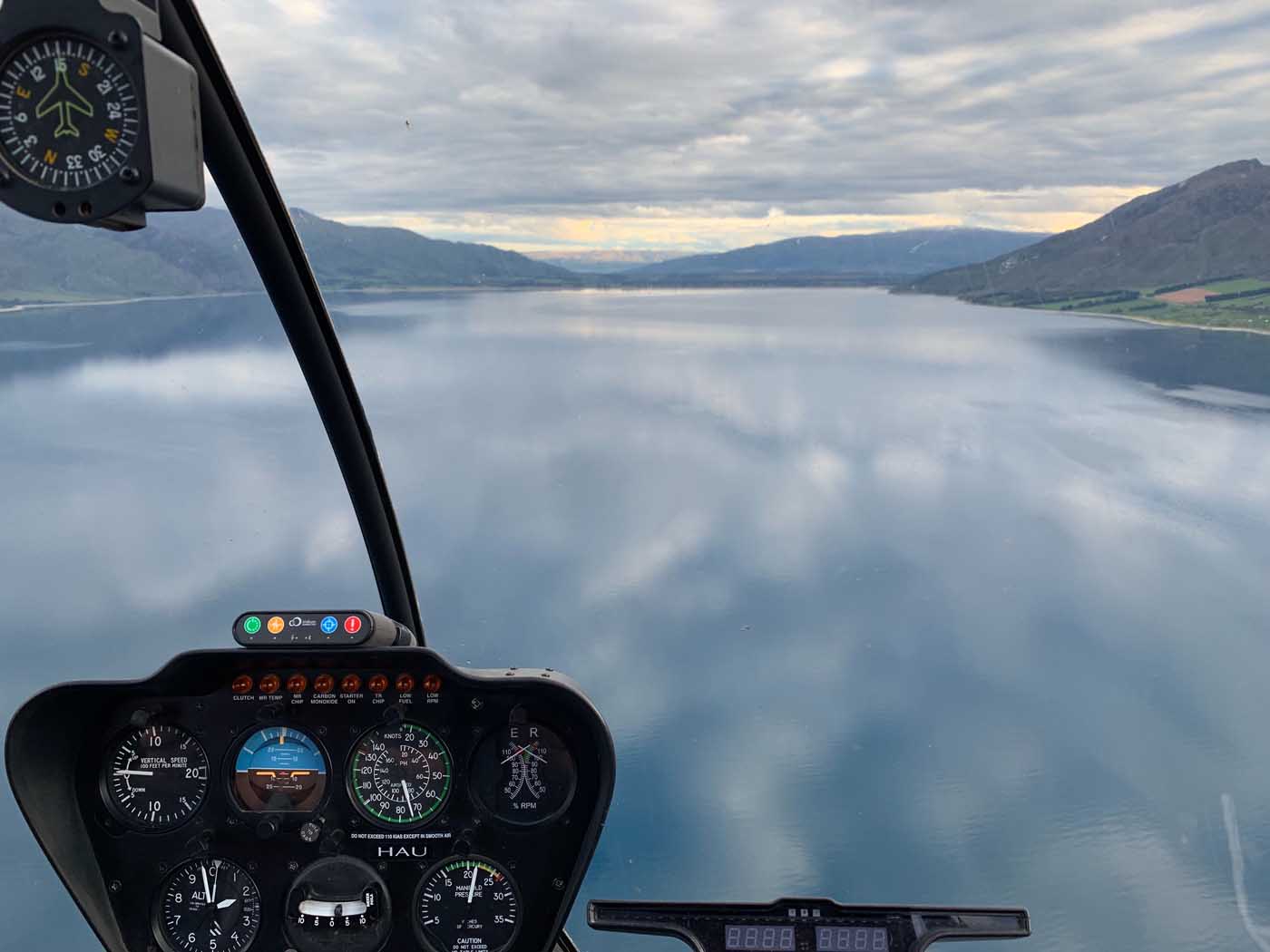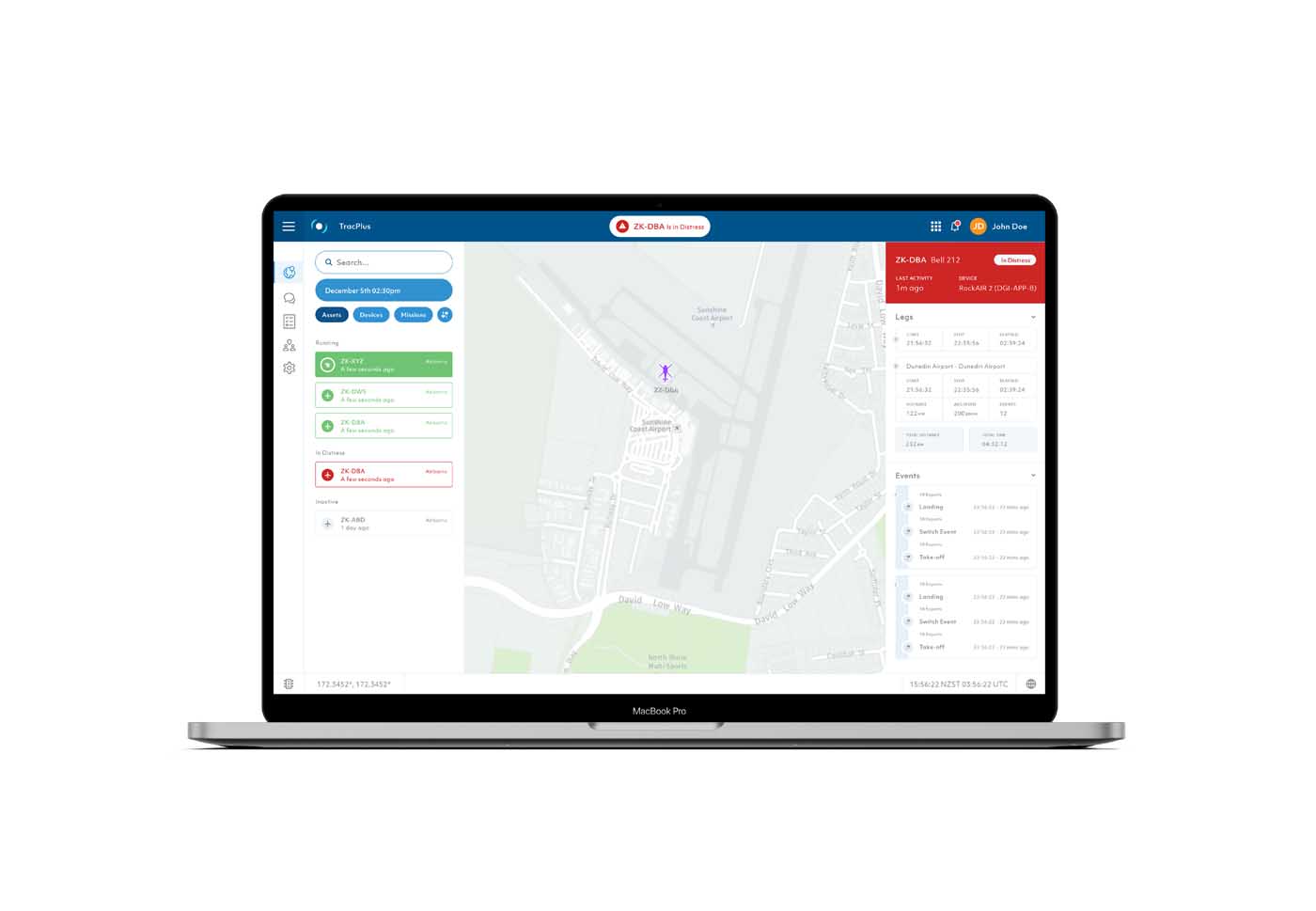Helicopters are incredibly useful machines, but oftentimes it takes collaboration with multiple parties to ensure a job is completed safely and successfully. For instance, if a small fishing vessel carrying five crew in open waters was to capsize after being struck by a powerful wave, the fastest way to reach those people would likely be by helicopter. But what if there was a record-keeping error at a local search-and-rescue headquarters, and an aircraft three hours away was dispatched instead of a helicopter less than 20 minutes away? Unfortunately, that’s exactly what happened in 2003 off the coast of North Otago, New Zealand; when the rescue aircraft did arrive, three of the men had passed away due to hypothermia.

It’s easy to imagine how the outcome could have been significantly better if each of the parties involved in the rescue were able to communicate easily and effectively with one another. That tragic story from 2003 is what inspired the creation of New Zealand-based tracking and communications company, TracPlus Global.
“The initial ethos of the organization was to ensure multiple parties involved in search-and-rescue were able to work effectively together through a single view of key data sources, one of which being asset location and sharing data across multiple parties,” said Trevor McIntyre, TracPlus CEO. “This approach meant that we started from a software-first and device-agnostic approach.”

TracPlus’s cloud-based software, TracPlus U1, can be described as a “bring-your-own” device software; it provides operators with tracking, messaging and monitoring assets they can access from any device or tracking hardware — from smart phones to satellite devices, using cellular, satellite or radio signals.
“We believe it’s vital to give customers a choice,” said McIntyre. “We work across multiple industries — land, sea and air — so our customers will have a large assortment of products that work best for them. . . . If their system can send data to TracPlus, then they can use us. The advantage then is if they’re working alongside a different business, contractor or organization — or even if they have different tracking and messaging devices within their own fleet — they can see each other and communicate via one platform.”
This approach — backed by a team of 50 employees across New Zealand, Australia, the U.S., the U.K., Chile and South Africa — is what has made TracPlus a global success, with over 1,200 customers in 40 different countries.

Something for everyone
What started as a solution to prevent tragedies similar to the one that occurred in 2003 has evolved beyond the search-and-rescue scene into the air medical, firefighting, and utility sectors — and beyond. With continuous implementation of customer feedback, the software itself has evolved beyond just tracking, too.
Among the main features of the software are the ability to track a fleet of aircraft, assets and personnel on one map using any available network; data-sharing; communication via in-app messaging, text or email; and integration with logbooks, maintenance scheduling systems and more — all while maintaining security and robustness.
But beyond the tracking aspect of the U1 software, TracPlus has gone a few steps further to include reporting features where data can be pulled into daily, weekly or monthly reports to provide better oversight of assets. Status boards are another addition that summarize assets including pilot/crew details, mission information and what crew are available to be tasked. An emergency notification feature has also been added to the software to alert teams if an aircraft or device has issued a signal for emergency.

Combined, these features have made the software attractive to a variety of helicopter sectors, even beyond TracPlus’s core first responder market. Natural gas and electric utility provider San Diego Gas & Electric, which operates a fleet of Erickson S-64 Aircrane, Sikorsky UH-60 Black Hawk and Airbus H145 helicopters, is one of TracPlus’s major utility customers in the U.S. The service, which has roughly 3.6 million customers across more than 4,100 square miles (10,620 square kilometers), utilizes the TracPlus U1 platform across its helicopters, drones, ground vehicles and remote workers.
“We have specific tools and software that have been created for [the utility] market to improve the efficacy of utility company operations,” said McIntyre, “as well as to improve productivity of assets, and communication between and coordination of all asset types.”

In the firefighting sector, it’s easy to understand why a platform like TracPlus U1 can help teams maintain communication and location awareness for effective operations. For instance, a blazing bushfire on a hillside might require a helicopter with a water bucket, fire trucks on the ground, and police services to control the fire and keep surrounding communities safe. But in order for things to run smoothly, each of those parties must be in communication with and aware of one another.
“This year more than ever in Australia, aviation-based firefighting was key in the management and containment of the fires and will continue to be part of combating these unbelievable natural disasters,” McIntyre told Vertical.
“With climate change, we can expect this could almost become the new norm. Further collaboration and visibility between ground- and air-based assets will become more critical in the future of firefighting, and our platform has been designed to facilitate the additional key information shared between ground and air assets.”

McIntyre said TracPlus currently has firefighting contracts in Australia, New Zealand, Chile, Canada and the U.S. — not just with helicopter operators, but with government agencies as well.
“What’s unique about TracPlus in the firefighting space is that different operators and contractors can use a modern tracking and messaging system of their choice — as long as they send their tracking information through TracPlus,” explained McIntyre. “TracPlus takes data from multiple sources, and displays this information on one screen. This allows different contractors to work together on one mission to ensure coordinated, effective and safe management of wildfires.
“We first launched this interoperable approach with Australia’s National Aerial Firefighting Centre (NAFC),” he continued. “Throughout the season, operators were flying in from around the country and the world; if they were not using our tracking devices, we had them on our system within hours of the aircraft arriving into Australia — minimizing the downtime and optimizing their flight times. We managed this seamlessly through our teams, the NAFC and the aircraft provider.”

The bigger picture
Building on aviation tracking opportunities in the core first responder space that TracPlus serves in, the company is continuing to expand with new customers and connections at a rapid rate. In the last three years, TracPlus has grown its customer base by four times.
McIntyre said recently the company welcomed two fire, three military and three large utility customers to the TracPlus family.

Keeping one eye on the future, TracPlus built its software as a cloud-based platform to ensure any prospective changes, like upgrades, are simple, and scalability (the number of users, devices, and organizations) is infinite.
TracPlus has also ventured into partnerships with various companies that provide tracking hardware technology, with which TracPlus’s software is able to integrate. The company now has live integrations with over 20 different tracking hardware providers, and is the integration provider for multiple fire authorities — not only for their aviation assets, but also for vehicles, drones, maritime assets and more.

With each new project and each new connection that TracPlus makes with a customer, it’s one more group of people the company is reaching to make their operations run smoother and safer — which ultimately, for TracPlus, is the bottom line.
Simply put, McIntyre said: “We care.”
He continued, “We have a people-first mentality in regards to how we treat our customers, but also how we operate as a team. We offer 24/7/365 support, so our customers know they can reach out to us at any time.

“Everything we do is customer-centric. We just provide the technology to try to facilitate what our customers do, and to help make their lives easier, more efficient and most importantly, safe. We are very proud to serve in this space.”





